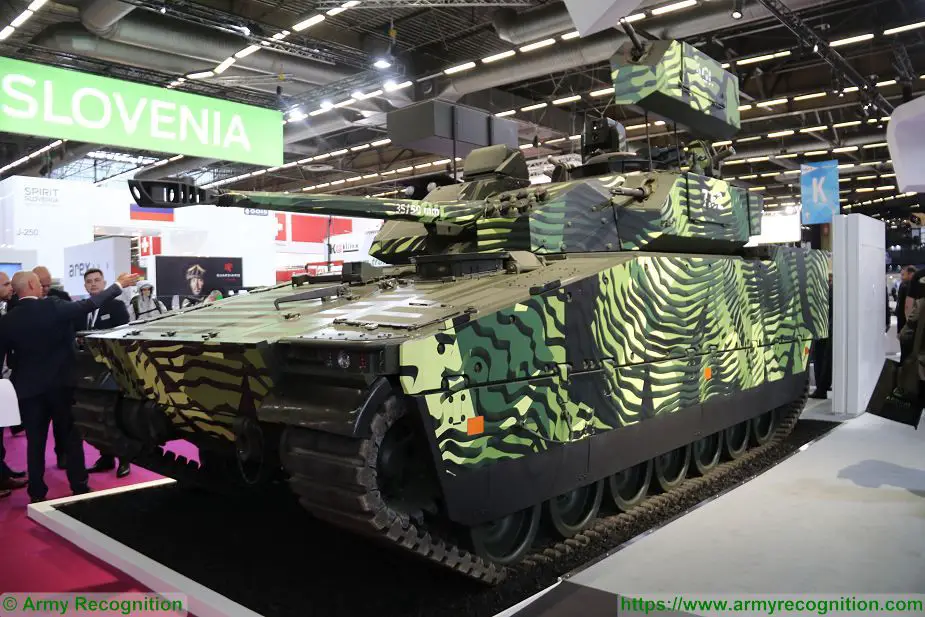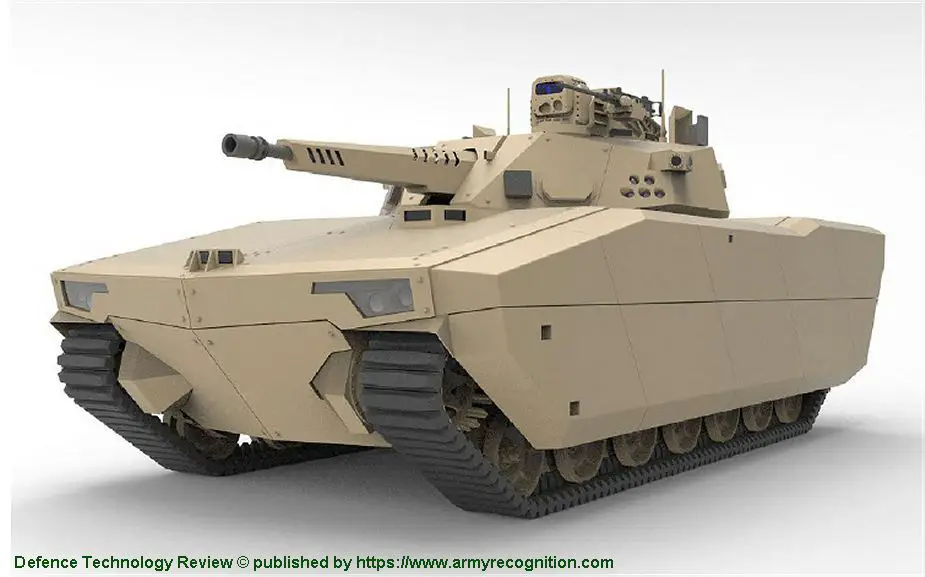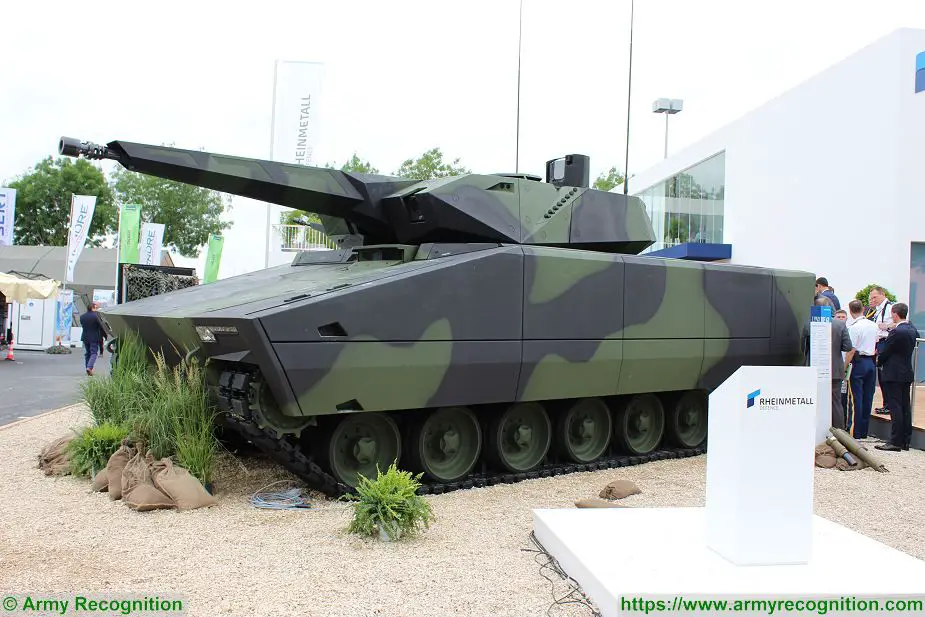The Australian recently announced the LAND 400 Phase 3 request for tender (RFT). Hence, Land Forces ‘18 is providing a relevant opportunity for the contenders to display their systems and capabilities to decision-makers.

CV90 MKIV from BAE Systems at Eurosatory 2018 (Picture source Army Recognition)
Three main industry partners are preparing to display their different vehicles to compete for the approximately $10-15 billion project to replace the ageing M113 APCs, with an Infantry Fighting Vehicle (IFV) and APC. The main competitors are BAE Systems with the CV90 MkIV, Hanwha Defense Systems with the AS21 Redback and Rheinmetall with the KF41.
The CV90 MkIV was born out of a research and development programme which incorporated feedback from the seven nations that currently use the CV90 platform. With upgrades to the drivetrain, the CV90 MkIV now has a new engine with up to 1,000 horsepower and a more powerful X300 heavy-duty transmission, while providing users with an additional two tonnes of payload without compromising the vehicle’s agility.
The new CV90 MkIV was presented at Eurosatory 2018 fitted with a two-man turret armed an automatic cannon from 35 to 500mm, one 7.62mm coaxial machine, one 40mm automatic grenade launcher and two anti-tank guided missile launchers mounted on the right side of the turret. The rear part of the CV90 MkIV can accomodate 8 infantrymen who can leave an enter the vehicle through a large hydraulically operated ramp located at the rear of the hull.

Drawing of the future South Korean AS21 Redback from the Company Hanwha (Picture source Defence Technology Review from Australia)
The South Korean company Hanwha Defense Systems AS21 Redback is proposing an evolved variant of the in-service K21, built on the basic platform of the K21. The K21 infantry fighting vehicle is described by Hanwha as the infantry fighting vehicle (IFV) that introduced the concept of "transport for infantry troops with combat capability". K21 features 20% lighter weight and 50% lower price competitiveness than other countries. The K21 IFV has achieved a high localisation rate and is expanding the line-up into 105mm turret loaded medium tanks and medium recovery vehicle. It is the top-of-the-line armored fighting vehicle in service with the Republic of Korea Armed Forces.
The AS21 will include the capability to integrate active protection systems into an evolved turret system. The Redback will, like its BAE competitor, be capable of transporting 11 people (three crew, eight troops), at a top road speed of 70km/h on hard surface (40km/h off-road), with an operational range of 500 km. The armament consists of a 40mm automatic cannon and a 7.62mm coaxial machine gun.

Rheinmetall's KF41 Lynx unveiled at Eurosatory 2018 (Picture source: Army Recognition)
Rheinmetall KF41 Lynx is also a tracked, highly protected IFV designed to meet the requirements of LAND 400 Phase 3. It was officially unveiled at Eurosatory 2018. The Lynx, described as highly survivable, adaptable to diverse environments, extremely agile, hard-hitting, and with huge payload reserves, is a next-generation combat vehicle designed to confront the challenges of the future battlefield like no other.
Ben Hudson, global head of Rheinmetall’s Vehicle Systems Division said, “With the Lynx KF41, the Rheinmetall team has developed a truly innovative next-generation combat vehicle. The breadth of capabilities that a Lynx IFV provides soldiers results in a veritable Swiss Army knife that has unprecedented utility across the full spectrum of conflict. Its modular, adaptable survivability systems allow the vehicle to evolve through life, the high level of mobility will provide battlefield commanders great tactical flexibility in combat, and the diverse effects that the Lance 2.0 turret can generate allow the crew to deal effectively with a wide variety of battlefield situations”.
Gary Stewart, Rheinmetall Defence Australia managing director, said, "Rheinmetall has developed this vehicle so it is positioned at an ideal level of maturity when Australia needs it to enter service in 2026 – and it will have a growth path to extend these capabilities through its 40-year life."
The Lynx KF41 has been designed to meet the following operational needs from inception: combined arms capabilities at the platoon level so that commanders can adapt while in contact; combined arms fighting systems to conduct operations across the spectrum of conflict; high mobility to enable tactical flexibility in contact; adaptable vehicle systems that can be upgraded or modified in theatre; and survivability that forces the enemy to operate above the detection threshold. The Lynx KF41 can transport 12 people (three crew, up to nine troops), has a maximum road speed of 70km/h, a range of more than 500 km, with an armament consisting of the Lance 2.0 30-35mm autocannon, a 7.62mm coaxial machine gun and a variety of additional close in weapons systems.














